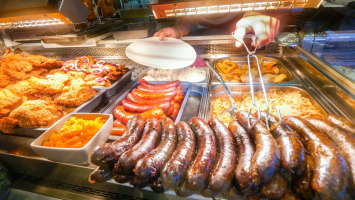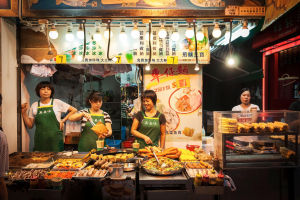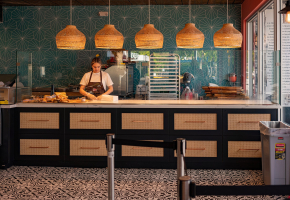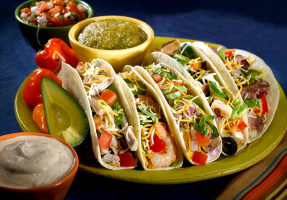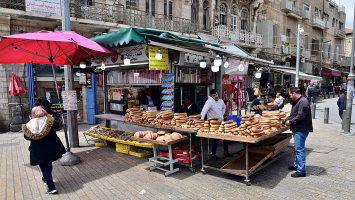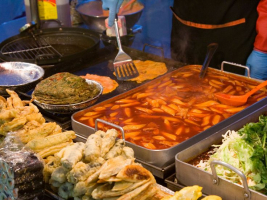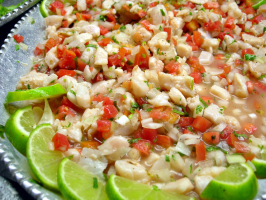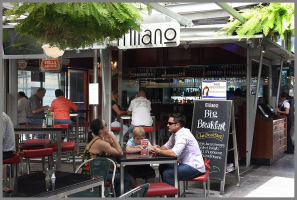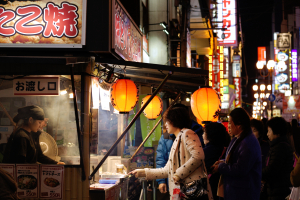Top 10 Best Street Food in New York
Street food in New York is a culinary journey like no other. This bustling city offers a diverse array of flavors from every corner of the globe. This article ... read more...explores the iconic street foods that define the Big Apple's palate.
-
Topping the list of New York's street food is the iconic hot dog. A culinary symbol of the Big Apple, its simplicity makes hot dogs a favorite for both New Yorkers and tourists alike.
So where did this love affair between New Yorkers and hot dogs begin? The story goes that German immigrants introduced the concept to New York. A simple concept of a beef sausage tucked inside a soft bun. Over time, the hot dog became a representation of New York itself - diverse, adaptable, and ever-evolving.
So, what's in a New York hot dog? First, there's the beef sausage: juicy, tender, and cooked to perfection. Then comes the bun, soft yet sturdy enough to hold the toppings. Speaking of which, the choices are endless. Some go traditional with ketchup and mustard. Others opt for sauerkraut or relish. Every bite offers a flavor explosion, a mix of savory meat with tangy or spicy toppings.
Now, if you're wondering where to get the best hot dog in town, many will point you to Nathan's Famous in Coney Island. Founded in 1916, this spot has been serving hot dogs for over a century. But Nathan's isn't the only game in town. Stroll through New York, and you'll stumble upon countless vendors. Each one has its signature style and secret recipe. That's the beauty of the New York hot dog scene – diversity and innovation.
On the matter of price, hot dogs remain an affordable delight. Many street vendors offer them for just a dollar. Of course, gourmet versions are available for those looking for an upscale twist. These might include premium ingredients or even artisanal sausages.
Key Takeaways:
- Origin: Introduced by German immigrants
- Flavor Profile: A mix of savory sausage and diverse toppings
- Must-Visit Spot: Nathan's Famous in Coney Island
- Price Range: Basic hot dogs start at $1, gourmet ones cost more.
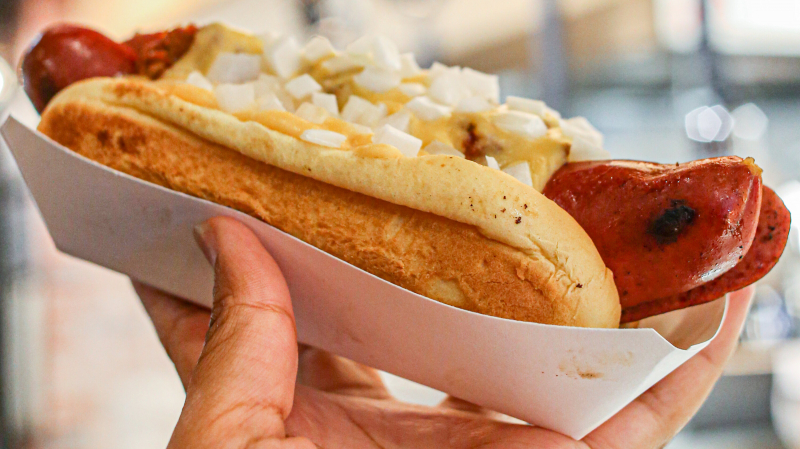
Screenshot of https://www.nytimes.com/2023/07/25/dining/in-search-of-new-york-citys-most-elusive-hot-dog.html Video by Travel Thirsty -
Next on New York's street food roster is the delightful pretzel. Unique in its twisty form and salty taste, this snack's European origins resonate within New York’s bustling streets.
The pretzel's journey to New York began with European immigrants. Specifically, it was the Germans, or the "Pennsylvania Dutch," who brought this doughy delight to America. Their traditional baking methods transformed simple ingredients into the twisted snack we cherish today.
So, what makes a New York pretzel special? It starts with the dough, which is neither too dense nor too fluffy. This dough gets its iconic twist, then a bath in boiling water with baking soda. This process gives the pretzel its golden hue and chewy texture. Once baked, a sprinkle of coarse salt adds the final touch. While many love their pretzel plain, some prefer a dab of mustard for a tangy contrast.
If you’re wondering where to sample the city’s finest pretzel, there's no shortage of options. Pretzel carts dot the streets of Manhattan, each offering their own version. Yet, many locals and tourists flock to iconic places like 'Sigmund’s Pretzels.' Known for their artisan approach, they give a gourmet twist to the traditional snack. They offer flavors like garlic parsley and even truffle cheddar. Such places elevate the humble pretzel to gourmet status.
On the cost front, the pretzel is a treat for the wallet too. A simple street pretzel often costs between $1 to $3. But if you're exploring gourmet options, with their specialty flavors and toppings, you might spend anywhere from $4 to $7.
Key Takeaways:
- Origin: Introduced by European, notably German, immigrants.
- Flavor Profile: Salty and chewy, often enhanced with mustard.
- Must-Visit Spot: 'Sigmund’s Pretzels' for an upscale twist.
- Price Range: Basic pretzels range from $1-$3, gourmet versions from $4-$7.
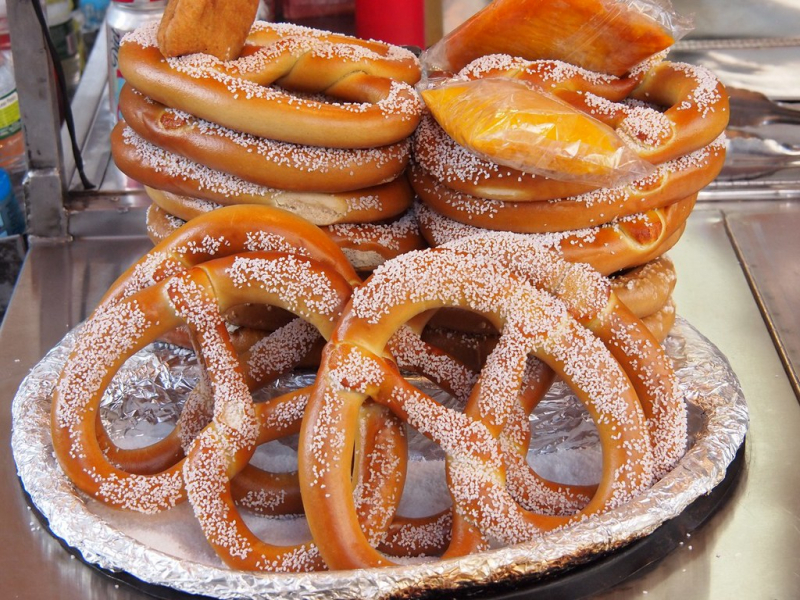
Photo by Paul Arps on Flickr https://www.flickr.com/photos/slapers/7843055006 Video by William's Kitchen EN -
Another jewel in New York's street food crown is the Halal Cart Chicken and Rice. A dish that beautifully marries flavors of the Middle East with the hustle and bustle of New York.
The origins of this dish trace back to Middle Eastern immigrants. They brought their culinary traditions, adapting them to fit the fast-paced life of New York. The result? A plate bursting with flavors, served rapidly from street carts.
A closer look at this dish reveals marinated grilled chicken, cut into juicy chunks. This sits atop a bed of fragrant rice. But there's more. The rice isn't ordinary; it's seasoned, often with turmeric, resulting in its notable yellow hue. Add some chopped lettuce and tomatoes, and the dish transforms into a balanced meal. The real magic, however, is the sauce. Whether it's the spicy red or the tangy white, the sauces elevate the dish, making it truly memorable.
For those seeking the best Halal Cart Chicken and Rice, 'The Halal Guys' on 53rd and 6th is a landmark. They began as a simple cart but have now expanded globally. Their secret? Consistent taste and generous portions. They're not the sole players, though. Many vendors sell their versions, each adding a unique spin. All of them make the dish varied and exciting throughout the city.
When it comes to price, Halal Cart Chicken and Rice is a steal. Street carts typically price it between $6 to $8. If you wander into specialized eateries or locations with added specialties, expect to pay between $9 to $12.
Key Takeaways:
- Origin: Introduced by Middle Eastern immigrants, adapted to New York's vibe.
- Flavor Profile: Grilled chicken on seasoned rice, made memorable by spicy or tangy sauces.
- Must-Visit Spot: 'The Halal Guys' on 53rd and 6th.
- Price Range: Street carts offer it for $6-$8, while specialized spots may charge $9-$12
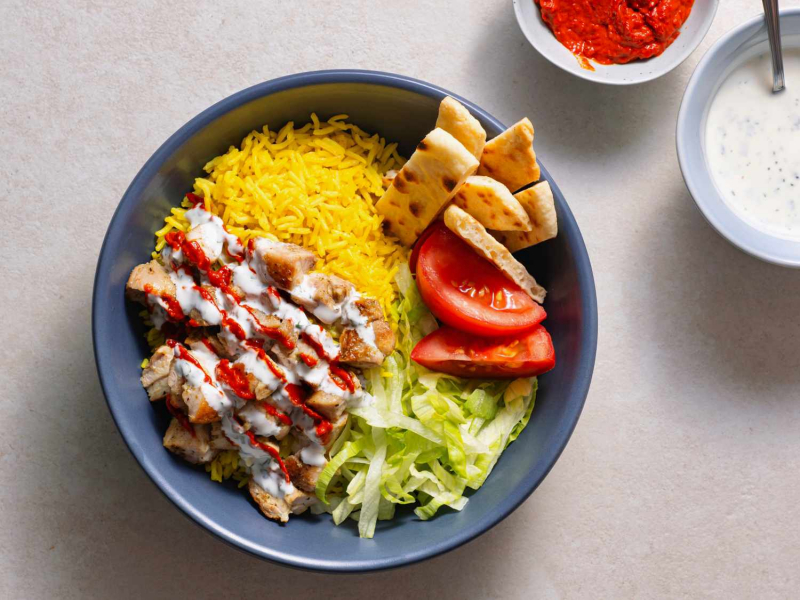
Screenshot of https://www.seriouseats.com/serious-eats-halal-cart-style-chicken-and-rice-white-sauce-recipe Video by Moribyan -
Next on our list is pizza, New York's culinary ambassador to the world. From movies to tourists' memories, New York and pizza are almost inseparable.
Now, if you're curious, the journey of pizza from Italy to New York is worth noting. While Italy gave us the original, New York added its flair. Early 20th-century Italian immigrants started the trend, selling pizzas in small nooks of the city. What was special? The combination of a thin crust, a luscious layer of tomato sauce, and molten cheese. With time, the range of toppings grew, reflecting New York's diverse palette.
Let's dig deeper into a New York pizza slice. First, the crust. It's thin, a bit crispy on the outside, but with a slight chewiness. It's made to be folded and eaten on the go. The sauce is the next layer. It's rich, tangy, and covers every inch. Cheese? That's a non-negotiable. A generous layer ensures a gooey bite. As for toppings, choices span from veggies to various meats, catering to every whim.
For a bite of history, Joe's Pizza in Greenwich Village stands out. Open since 1975, it remains a favorite. However, the charm of New York's pizza scene is in its diversity. From Brooklyn to Manhattan, every block boasts its unique pizzeria, each with its own loyalists.
Cost-wise, pizza is pocket-friendly. A simple slice might cost you around $2.50. But if you're leaning towards the gourmet side, with special ingredients and unique combinations, it could be around $5 per slice. Some places offer a whole pie for around $30, ideal for sharing.
Key Takeaways:
- Origin: Pizza traveled from Italy, but New York made it iconic.
- Flavor Profile: Crispy-thin crust, rich sauce, and loads of cheese. Toppings are a personal pick.
- Must-Visit Spot: Joe's Pizza, a time-tested favorite.
- Price Range: Basic slices start at $2.50. Gourmet? That's around $5 a slice or $30 for a pie.
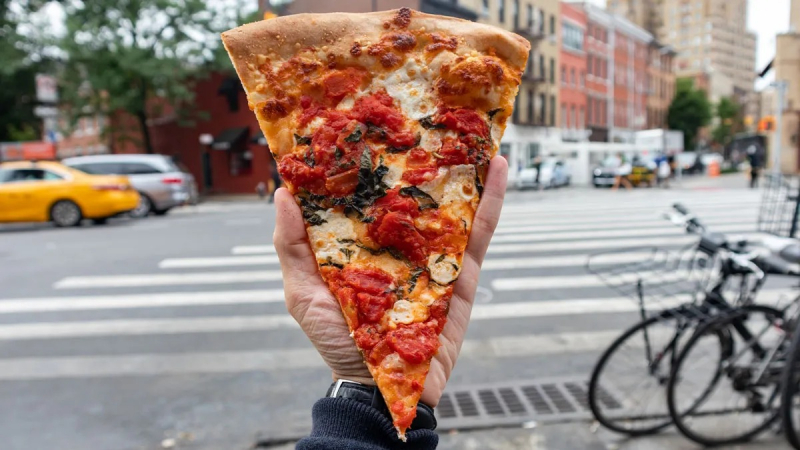
Photo by James Andrews on Tinybeans https://tinybeans.com/new-york/best-pizza-nyc/ Video by Travel Thirsty -
New York's love for bagels is legendary, but combined with lox? It's a match made in heaven. Bagels and lox sit at the heart of New York's breakfast tradition.
The bagel's journey began in Poland. Jewish immigrants brought it to the city. It's a dense, doughnut-shaped bread, boiled before baking. This gives it a unique chewy texture. Lox, on the other hand, refers to brined salmon. It's silky, salty, and oh-so-delicious. Pairing these two? A New York classic was born.
Now, let's break down a typical bagel and lox serving. The bagel is sliced in half. The insides might be toasted to a golden hue. Cream cheese comes next. It's spread thickly, forming a creamy layer. Lox is then layered on top, its pink hue contrasting beautifully with the white cheese. Garnishes like capers, onions, or tomatoes can be added. Each bite is a medley of textures and flavors: chewy, creamy, salty.
The best spot to savor this delicacy? It's a matter of debate. Russ & Daughters on the Lower East Side is a must-visit. Operating since 1914, it's the epitome of tradition. However, New York brims with bagel shops. From corner delis to upscale cafes, the choices are endless. Each claims its version is the best, making it a delightful challenge for foodies.
Price-wise, a bagel and lox sandwich ranges quite a bit based on where you buy it. At local delis, expect to shell out around $6 to $8. However, specialty shops or more upscale establishments might charge anywhere from $12 to $18. These often use premium ingredients or have a storied legacy.
Key Takeaways:
- Origin: Bagels came from Poland, while lox is brined salmon. Together, they form a New York staple.
- Flavor Profile: Chewy bagel, creamy cheese, and salty lox. Garnishes add an extra zing.
- Must-Visit Spot: Russ & Daughters, an iconic establishment since 1914.
- Price Range: Starts at $6-$8 in local delis. Upscale spots? Expect $12-$18
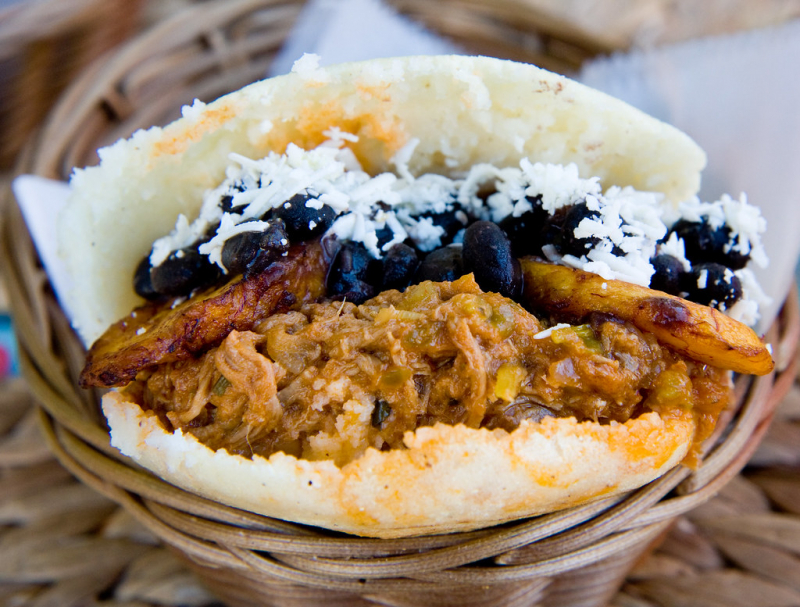
Screenshot of https://www.tasteatlas.com/bagel-and-lox Video by Insider Food -
Another gem in New York's street food scene is the arepa. Originally from Venezuela and Colombia, arepas have captured the hearts and palates of New Yorkers.
Arepas are cornmeal cakes. They're round and often grilled till golden. Their exterior? Crisp. The inside? Soft and fluffy. It's this contrast that makes every bite memorable. But the magic of arepas doesn't end there. These corn cakes open a world of fillings.
Typically, the arepa is sliced open like a pocket. Inside, the choices are endless. Classic fillings include shredded beef, black beans, or cheese. Some might add avocados or plantains. Spicy sauces or creamy guacamole can top it off. Every vendor has their specialty. This makes hunting for the best-filled arepa an adventure in the city.
Where can one find these delightful pockets? The streets of New York teeming with arepa vendors. They offer a quick, savory snack for busy New Yorkers. One standout is the Arepa Lady in Jackson Heights. Known for her delicious arepas, she's been a favorite for years. But she's not alone. The city is home to many eateries boasting of their arepa prowess. Each has a unique spin, making it worth a try.
The cost of an arepa varies by its filling and location. On the streets, a basic arepa might set you back $3 to $5. If you venture to specialty cafes or eateries, prices might range from $6 to $10. These places often serve gourmet fillings or use high-quality ingredients.
Key Takeaways:
- Origin: Arepas hail from Venezuela and Colombia.
- Flavor Profile: Crisp exterior, soft inside. Fillings range from beef to beans.
- Must-Visit Spot: The Arepa Lady in Jackson Heights. A city favorite for years.
- Price Range: Street vendors charge around $3-$5. Specialty places? Between $6 and $10.

Photo by Garrett Ziegler on Flickr https://www.flickr.com/photos/garrettziegler/5512517158 Video by settime2588 -
New York’s culinary scene boasts of diverse flavors. Among its diverse offerings is the delicious dumpling. A simple yet delightful dish, dumplings have become a staple for many in the city.
Tracing back the history of dumplings in New York, they found their way here through various cultures. Each culture brought its unique twist, and the city embraced them all. At the heart of every dumpling is a soft dough that encases fillings that can be meat, vegetables, or even sweet treats. The way they are cooked, whether steamed, fried, or boiled, plays a pivotal role in their taste and texture.
Chinatown, a bustling neighborhood, has become the go-to spot for many dumpling enthusiasts. Here, thin-skinned dumplings filled with juicy fillings are a hit. A quick dip in soy sauce, perhaps with a touch of chili oil for those who love some heat, and it's a bite of heaven. Wander over to the East Village, and you'll find Ukrainian pierogis. These are heartier with a thicker dough and often filled with potatoes, cheese, or meats. A dollop of sour cream on top, and it's comforting in a bite.
If recommendations are what you're after, Vanessa's Dumpling House is a must-visit. Their Beijing-style dumplings have won the hearts of many. However, in a city as vast as New York, every corner has a dumpling place worth trying, each with its story and flavor.
For anyone curious about the cost, dumplings are a budget-friendly treat. Many places in Chinatown offer them at prices as low as $1 to $2 for a plate. But for those wanting something more gourmet, some restaurants serve dumplings with unique fillings and sauces, costing between $5 to $10.
Key Takeaways:
- Origin: Different cultures introduced their version of dumplings to New York.
- Flavor Profile: Ranges from juicy meats to hearty veggies, with cooking methods adding unique textures.
- Must-Visit Spot: Vanessa's Dumpling House for Beijing-style dumplings.
- Price Range: Street dumplings can start at $1 to $2, while gourmet versions go up to $5 to $10.
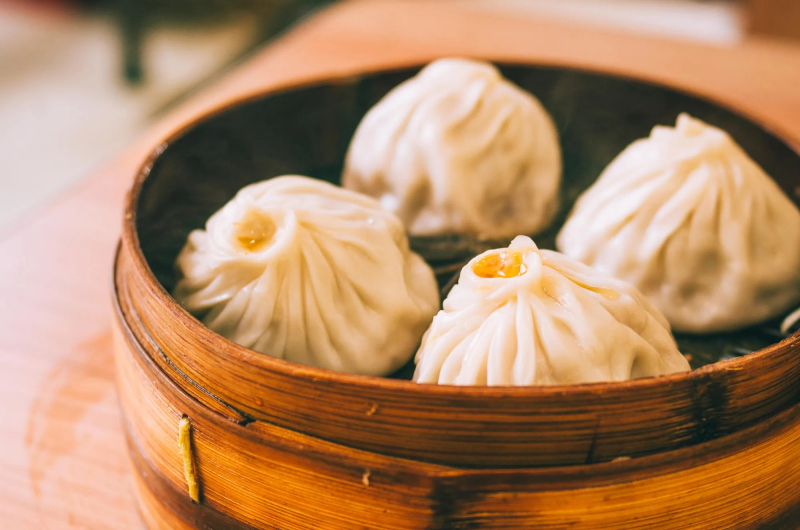
Screenshot of https://www.vogue.com/article/soup-dumplings-new-york-city-restaurant-guide Video by Strictly Dumpling -
New York, a melting pot of cultures, offers a wide array of street foods. Among them, Tamales hold a special place. These steamy pockets of delight, with roots tracing back to Latin America, have found a loving audience in the Big Apple.
The journey of tamales began thousands of years ago in ancient Mesoamerica. Civilizations like the Aztecs and Mayans enjoyed them during festivals. They have stood the test of time and traveled across borders, and New York welcomed them with open arms. The structure is simple but beautiful. A dough made from masa (corn dough) hugs a filling. Fillings can be varied: spicy meats, cheese, veggies, or even fruits for sweet versions. This ensemble gets wrapped in a corn husk and steamed.
The experience of biting into a tamale is unique. The soft outer layer gives way to a flavorful center. The corn dough is moist and contrasts with the filling. The corn husk isn't meant for eating but imparts an earthy aroma. Depending on the filling, tamales can be a dance of spices, sweetness, and textures in the mouth.
Walking through areas like Jackson Heights in Queens or Sunset Park in Brooklyn, the scent of freshly steamed tamales is irresistible. Street vendors, with their carts, serve them piping hot. For those wanting to indulge, they're quite affordable.
Prices usually range from $2 to $3 each. Some specialized restaurants, however, have gourmet versions with unique fillings, which might be priced a bit higher.
While tamales have become popular street food, they're also a staple during celebrations within Latin American communities in New York. Christmas, for instance, sees families gathering to make tamales together, turning the act into a bonding ritual.
Key Takeaways:
- Origin: Tamales trace their roots back to ancient Mesoamerican civilizations.
- Flavor Profile: A harmony of soft masa dough with varied fillings, offering a mix of flavors and textures.
- Must-Visit Spot: Jackson Heights in Queens and Sunset Park in Brooklyn.
- Price Range: Typically $2 to $3, but gourmet versions in restaurants might cost more.
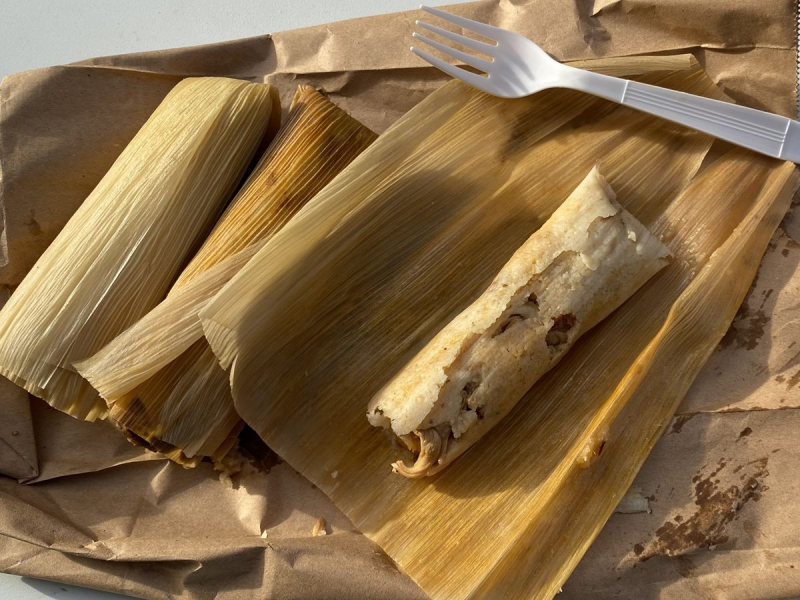
Screenshot of https://ny.eater.com/maps/nyc-best-mexican-tamales Video by Munchies -
Roasted nuts have an allure that's hard to resist. New York City streets come alive with their tempting aroma, especially in cooler months. It's a sensory treat – the sound of nuts crackling as they roast, their sweet smell wafting in the air, and the warmth of the paper bag when you finally hold it.
Nuts have been part of human diets for thousands of years. Almonds, peanuts, cashews, and walnuts, among others, have been cultivated and enjoyed by many cultures. But there's something magical about the way New York does roasted nuts. The vendors use large rotating drums, ensuring an even roast. As the nuts turn golden brown, they're coated with a mixture of sugar, cinnamon, and salt. This caramelization process gives them a shiny finish and an addictive taste.
Taking a bite is a treat. The outer layer is crispy with a hint of sweetness. As you bite deeper, the true flavor of the nut comes forward. It's a balance of sweet and salty, with the nut's natural flavor shining through.
The origins of the roasted nut carts in New York aren't entirely clear. Yet, one thing is certain; they've become a staple. On a cold day, nothing warms you up like a bag of these sweet and salty delights. The city's bustling areas, especially around Central Park and Times Square, are popular spots to find these vendors.
In terms of cost, roasted nuts are a value-for-money snack. Prices typically range from $3 to $5 for a small bag. But the cost isn't just monetary. These nuts have nutritional benefits too. They are rich in healthy fats, protein, and essential vitamins and minerals. So, while they're a delicious treat, they also provide a boost of energy.
While roasted nuts are now synonymous with New York street food, they also find their way into home kitchens. Many New Yorkers have their recipes, adding personal twists with spices or other flavorings.
Key Takeaways:
- Origin: The exact beginnings of roasted nut carts in New York are murky, but they have become city icons.
- Flavor Profile: A delightful mix of sweet, salty, and the nut's inherent taste.
- Must-Visit Areas: Central Park and Times Square have many vendors.
- Price Range: A small bag typically costs between $3 to $5, offering both taste and nutrition.
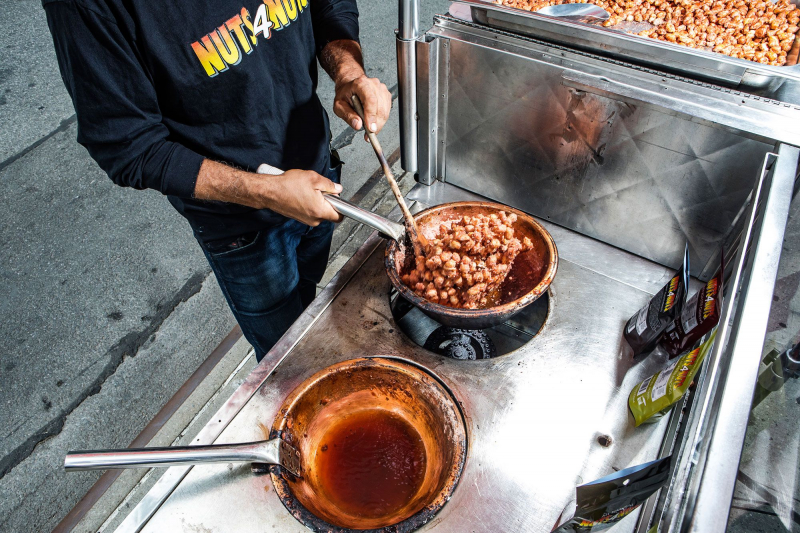
Screenshot of https://tastecooking.com/the-honey-roasted-nuts-that-perfume-new-york-streets/ Video by Munchies -
Bao Buns, often just called "bao," have taken New York City by storm. These fluffy, white steamed buns, originally from China, have become an essential part of the city's diverse culinary tapestry. What makes bao so beloved is its versatility. It's like a blank canvas ready to be painted with various flavors.
Bao has deep roots in Chinese cuisine. Traditionally filled with pork, today's bao buns in New York boast a plethora of fillings. From succulent duck to tender beef, crispy vegetables, and even sweet fillings like red bean or custard, there's a bao for every palate.
The bao bun itself is a marvel. Soft, pillowy, and slightly chewy, its taste is neutral, making it perfect for fillings. When you bite into a bao, the bun gives way to the filling inside. It offers a burst of flavor. The contrast between the gentle taste of the bun and the rich, savory, or sweet filling creates a memorable eating experience.
If you're in New York and want to try these delights, you're in luck. Bao buns are available in traditional Chinese restaurants and modern eateries alike. In places like Chinatown, vendors sell them on the street, allowing you to savor them on the go. Over the years, chefs across the city have experimented with bao. They introduce innovative fillings that fuse different culinary traditions.
One of the standout features of bao is its affordability. Despite being a gourmet treat, it doesn't break the bank. Prices can start from as low as $2 for a basic bao, with more gourmet options fetching higher prices. Yet, the joy of eating a bao, warm from the steamer, with steam rising as you tear it open, is priceless.
Interestingly, bao buns have moved beyond just being food. They've entered popular culture. Cute bao-themed merchandise, from t-shirts to plush toys, can be spotted around the city, proving their widespread appeal.
Key Takeaways:
- Origin: Bao buns have their roots in Chinese cuisine but have been embraced and innovated upon in New York.
- Flavor Profile: A soft and neutral bun filled with various savory or sweet fillings, creating a flavor explosion.
- Must-Visit Spot: Chinatown has many traditional bao vendors, but they're available city-wide.
- Price Range: Starts as low as $2, with gourmet versions priced higher.
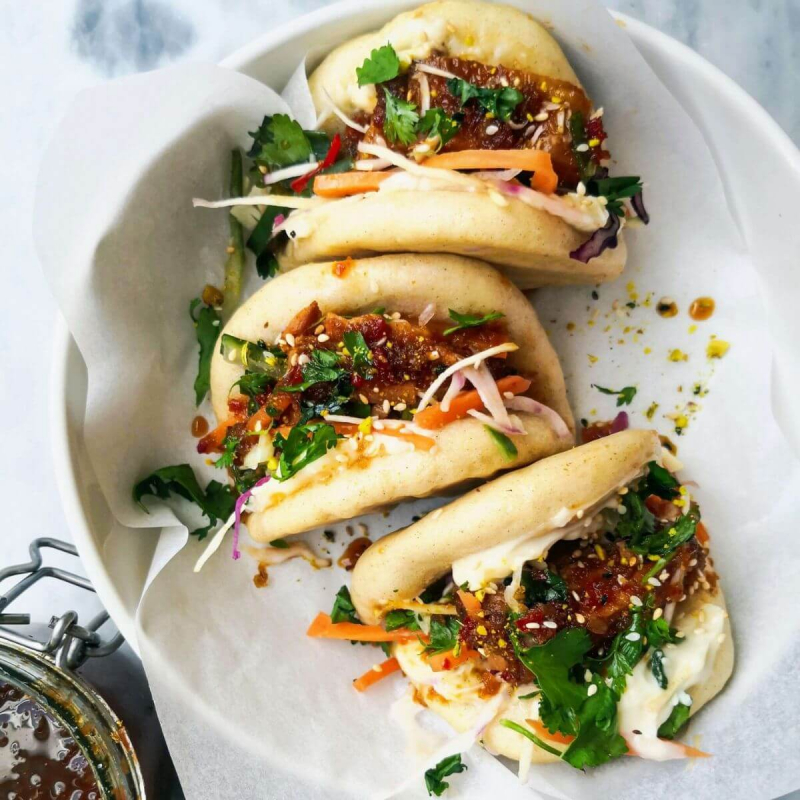
Screenshot of https://dishedbykate.com/how-to-make-bao-buns/ 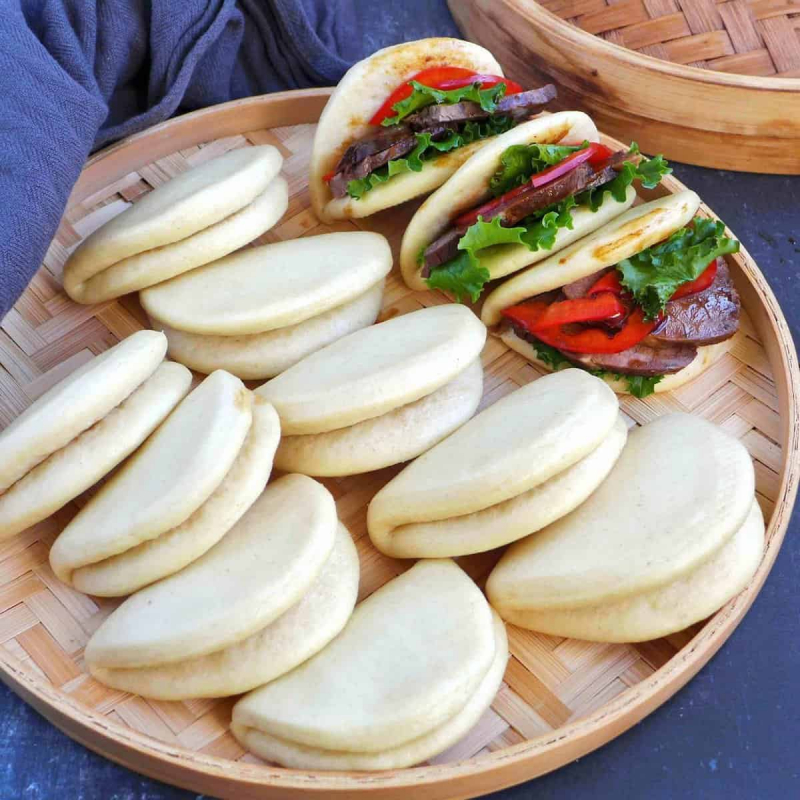
Screenshot of https://www.bbcgoodfood.com/recipes/steamed-bao-buns



















